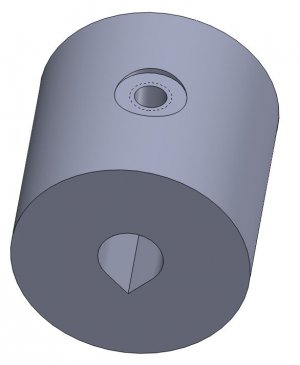It will be a lot simpler to just buy a linear shaft / guide rod like this kind. The finish and tolerance should meet your requirements. Cheap too. I have a bigger lathe but still I won't try to make it. Just not worthwhile.
Absolutely. Except the rod is "Invar", a special nickel / iron alloy that has roughly 1/10 the coefficient of thermal expansion of ordinary metals.
This little 0.25" by 36" rod cost over US $50, delivered. There are other suppliers, and other brands of such materials, some of which may (or may not) have better finishes, but the alternatives that I've found are far more expensive than that, even. I did buy a tight-tolerance standard steel rod for practice / mock-up purposes (costing 10 times less), but I'd like to make the best of this Invar rod if I can.
I sought that material in particular because I have a hobby interest in recreating historical scientific experiments. In this case, I'm interested in building a precision "gravity pendulum" (i.e., a "Kater's pendulum") that, starting in the early 1800's, and extending to the 1950's, was used to measure the strength of local gravity.
About 5-6 digits of precision is necessary for such measurements, and the use of Invar substantially reduces the need to compensate for expansion/contraction of the pendulum with temperature. The earliest such pendulums used brass (Invar hadn't been invented yet), and the last of the gravity pendulums used fused quartz for the pendulums, as that has even lower temperature coefficient, but that's considerably harder to get hold of and work with. Today local gravity is determined by measuring the acceleration of a falling object in a vacuum using laser interferometry.

